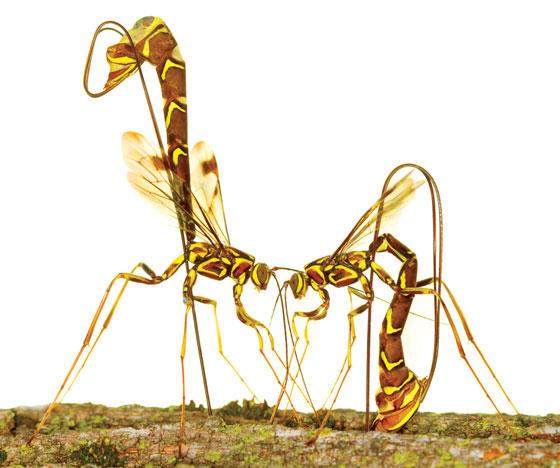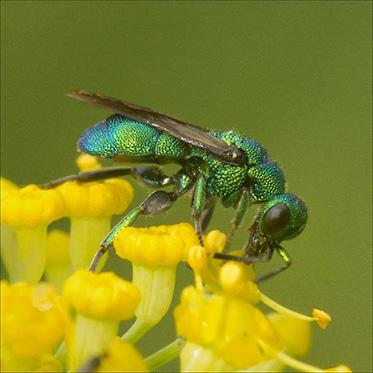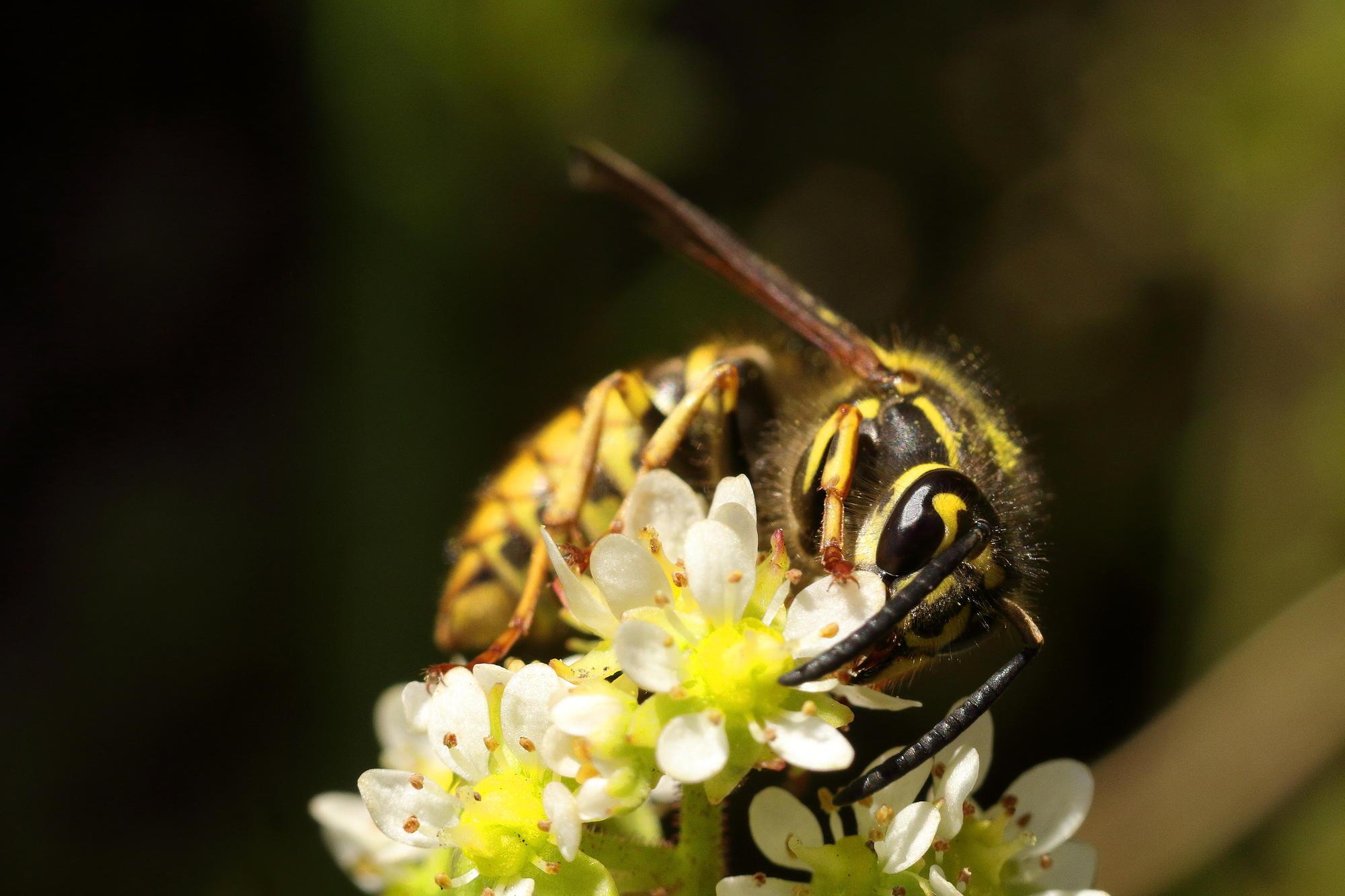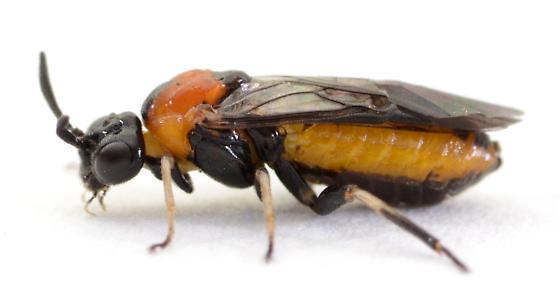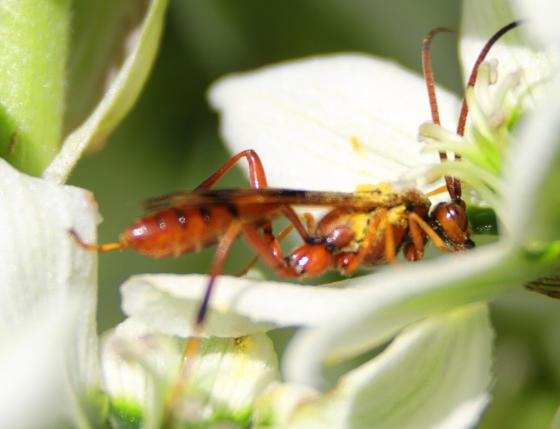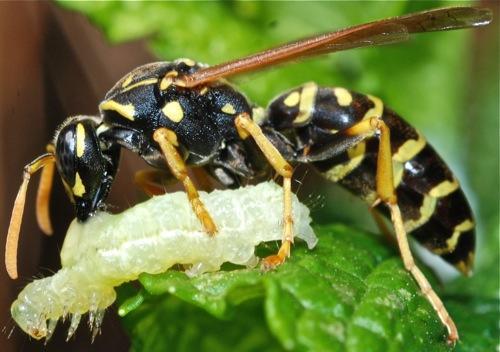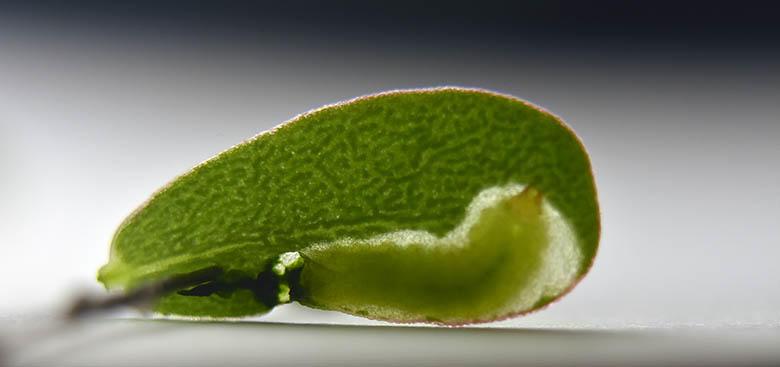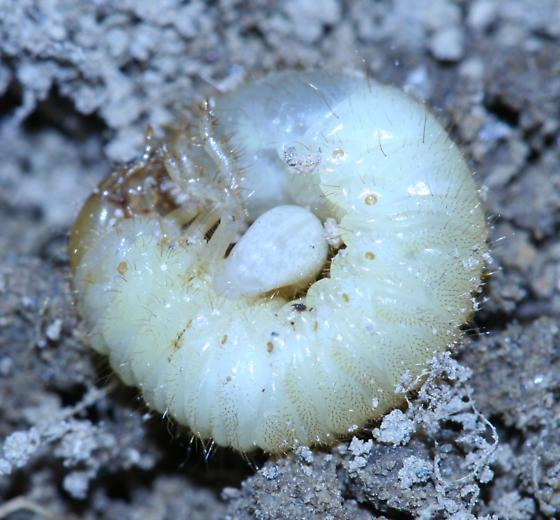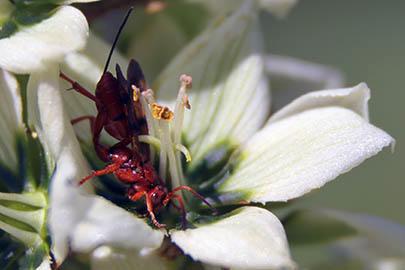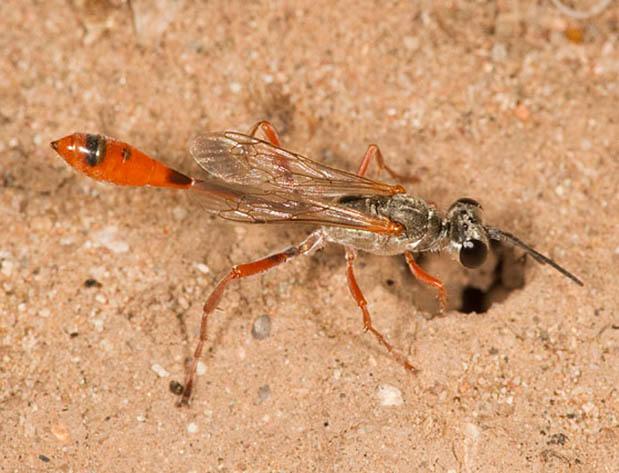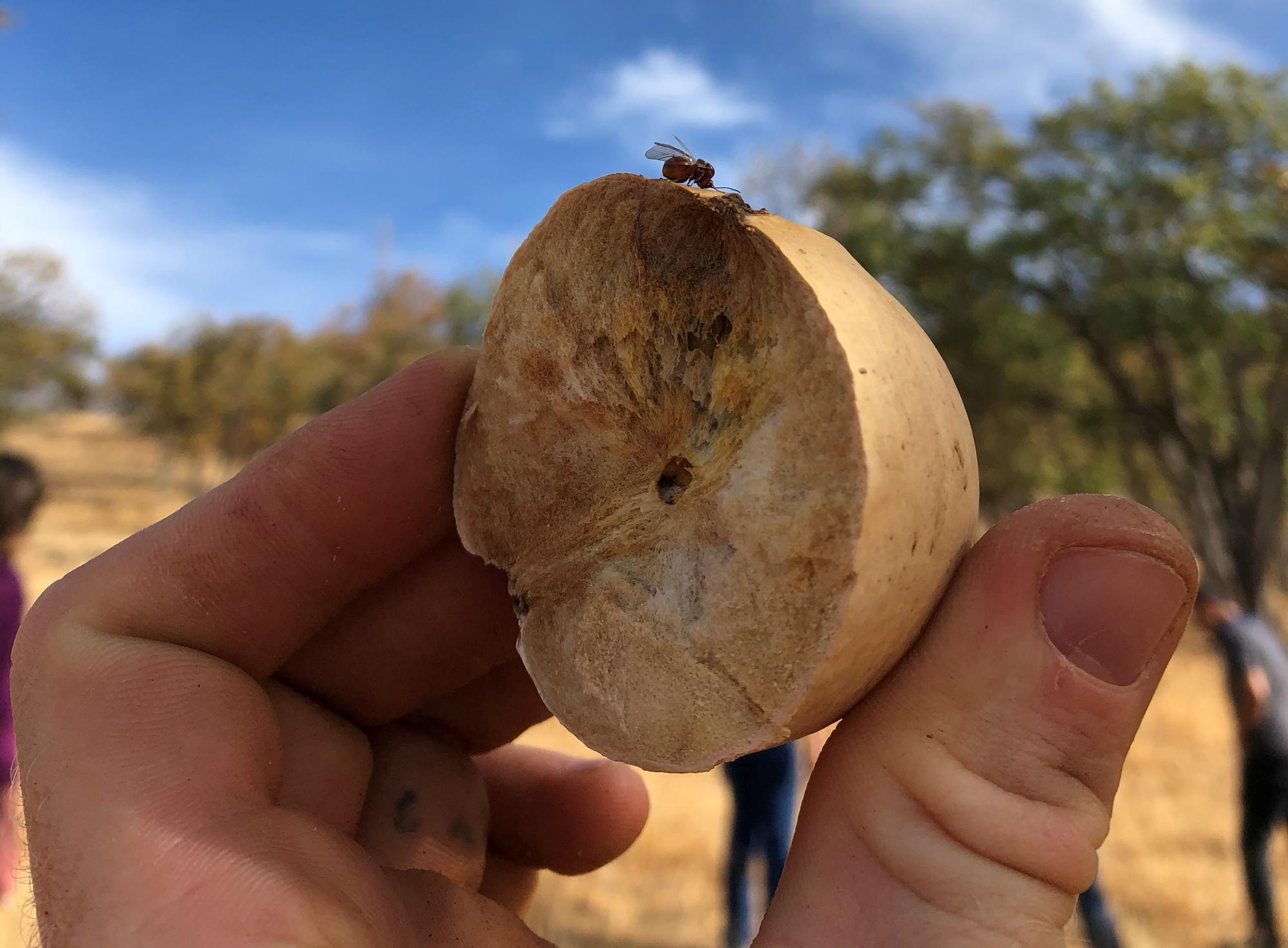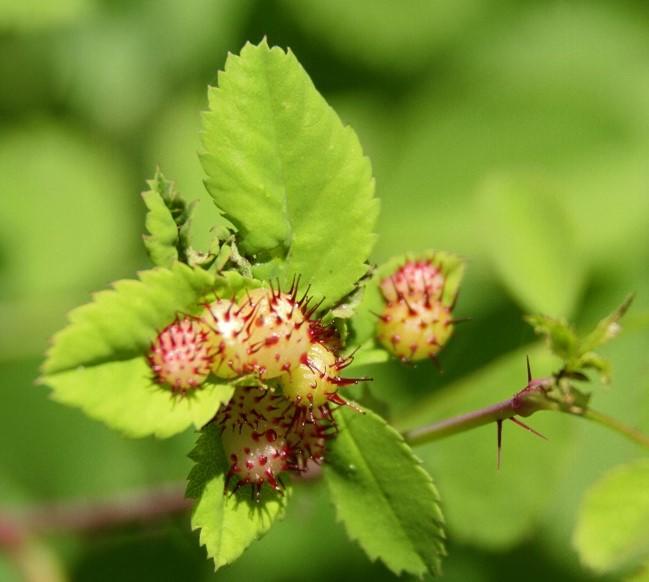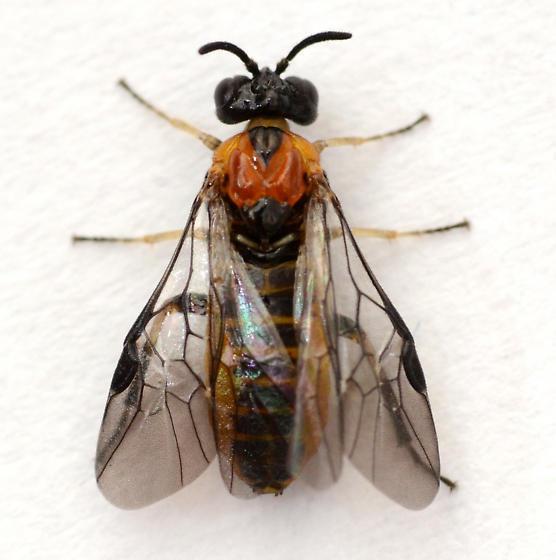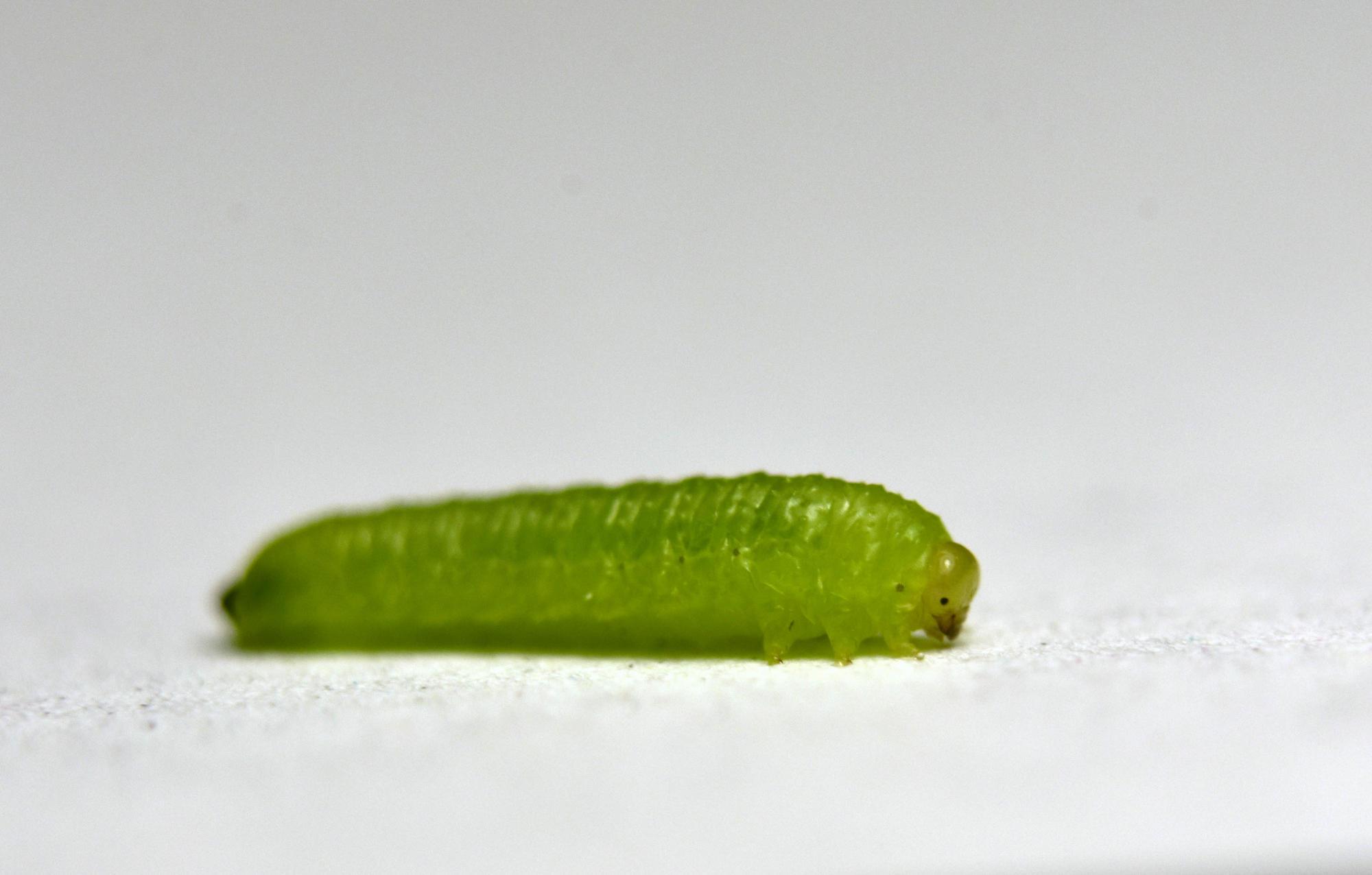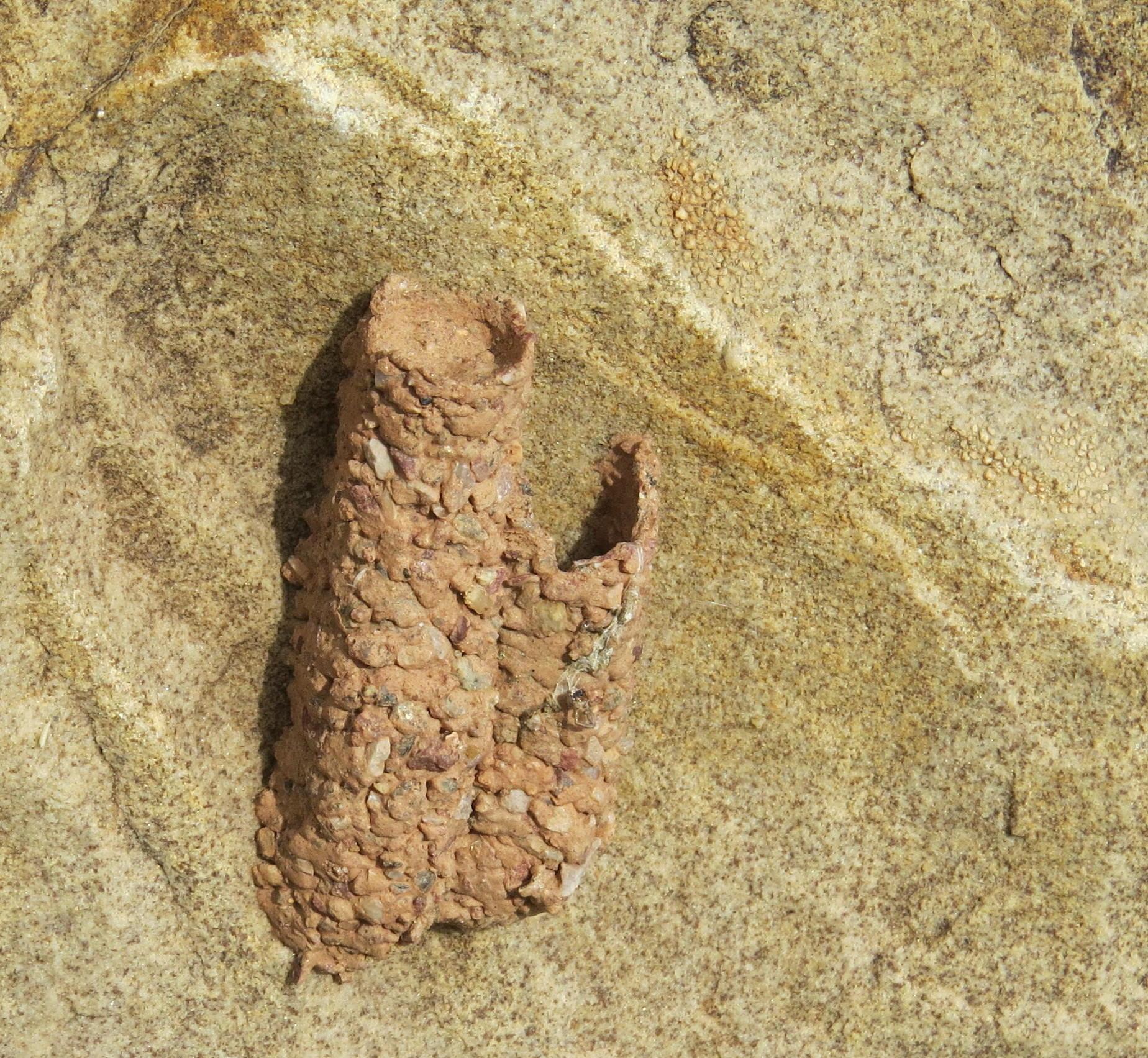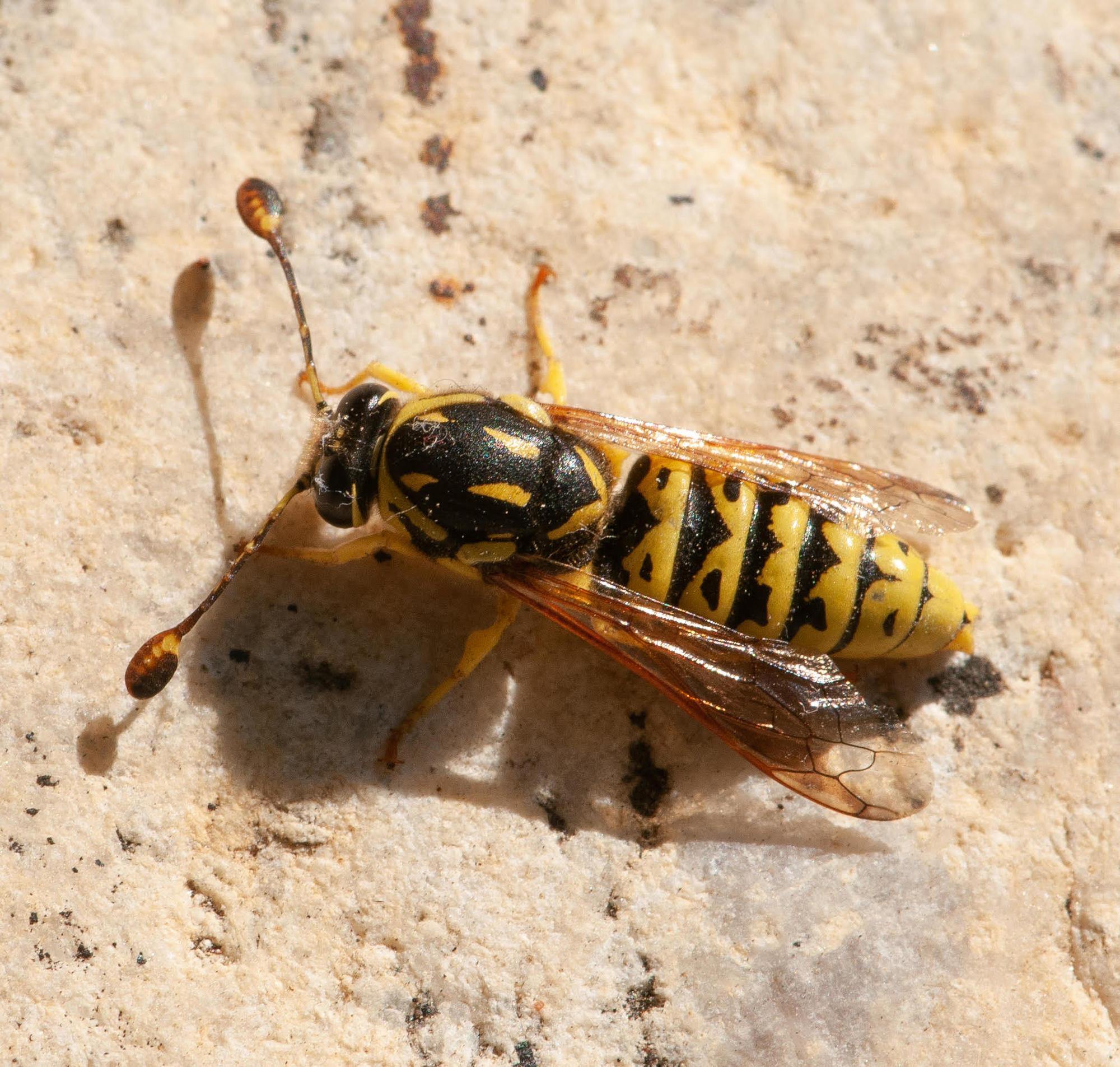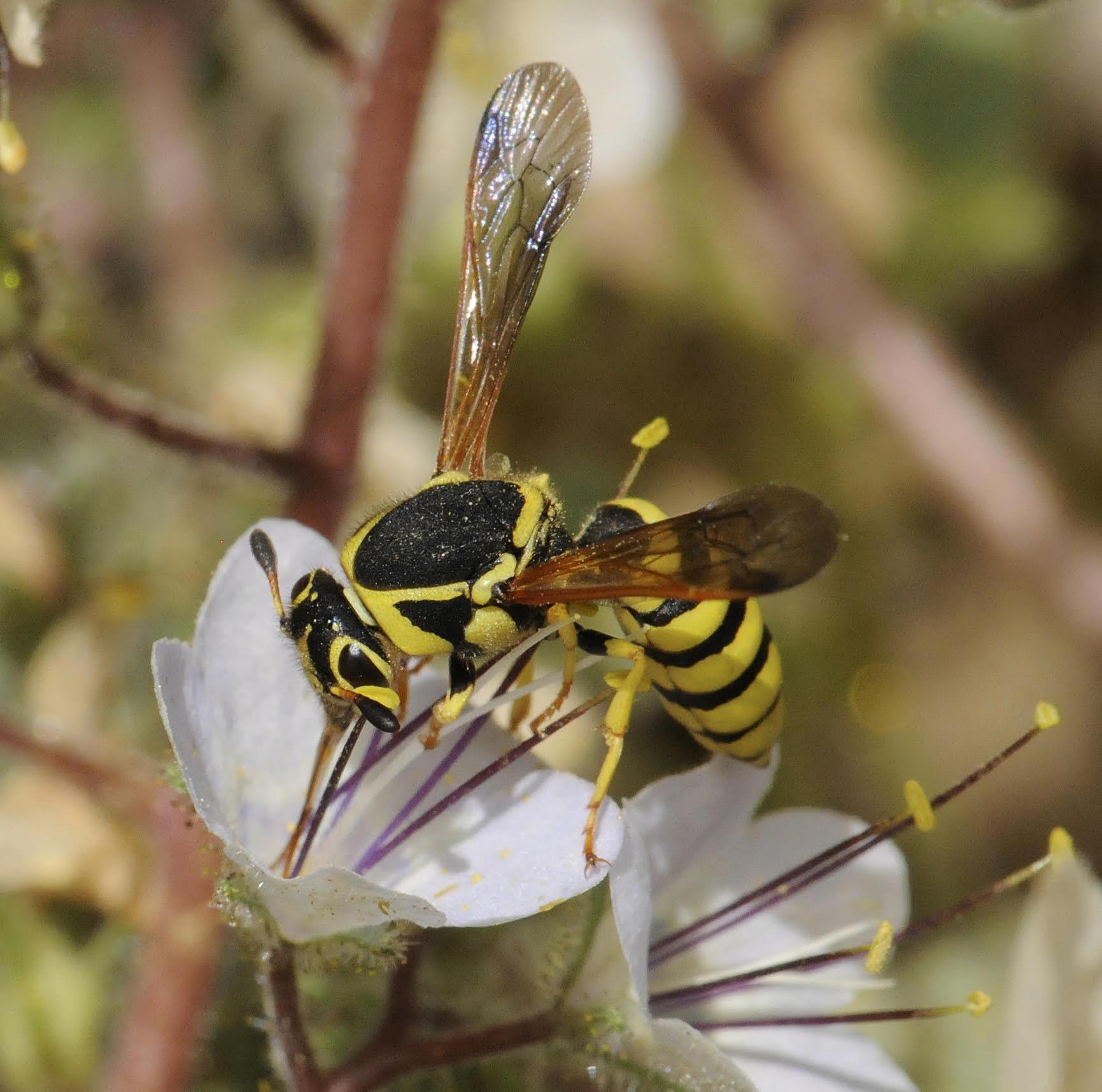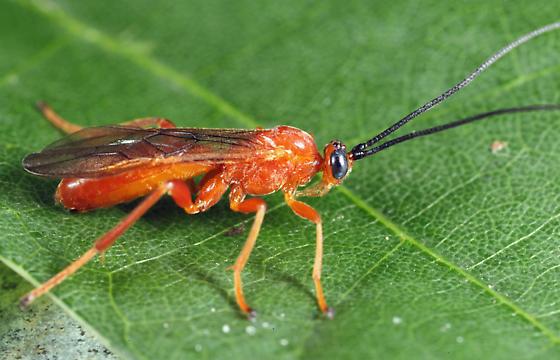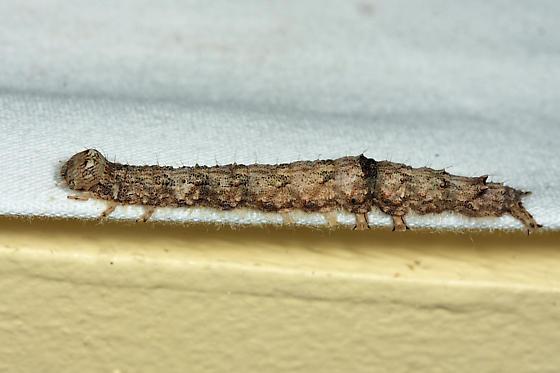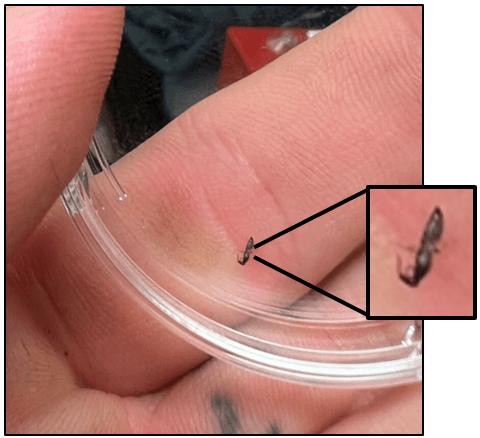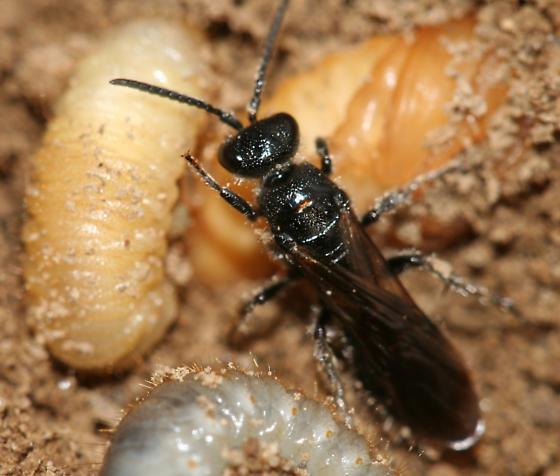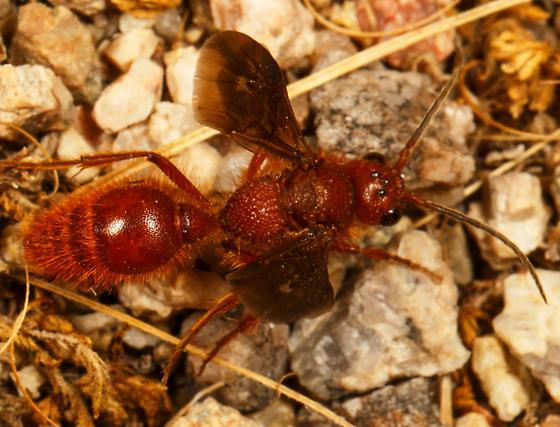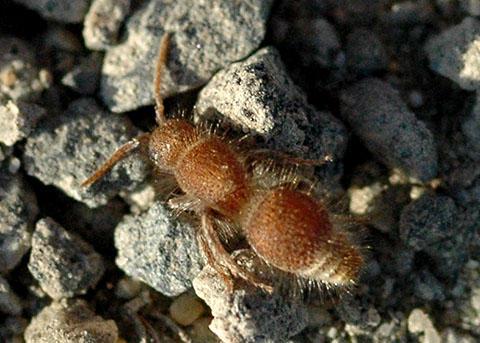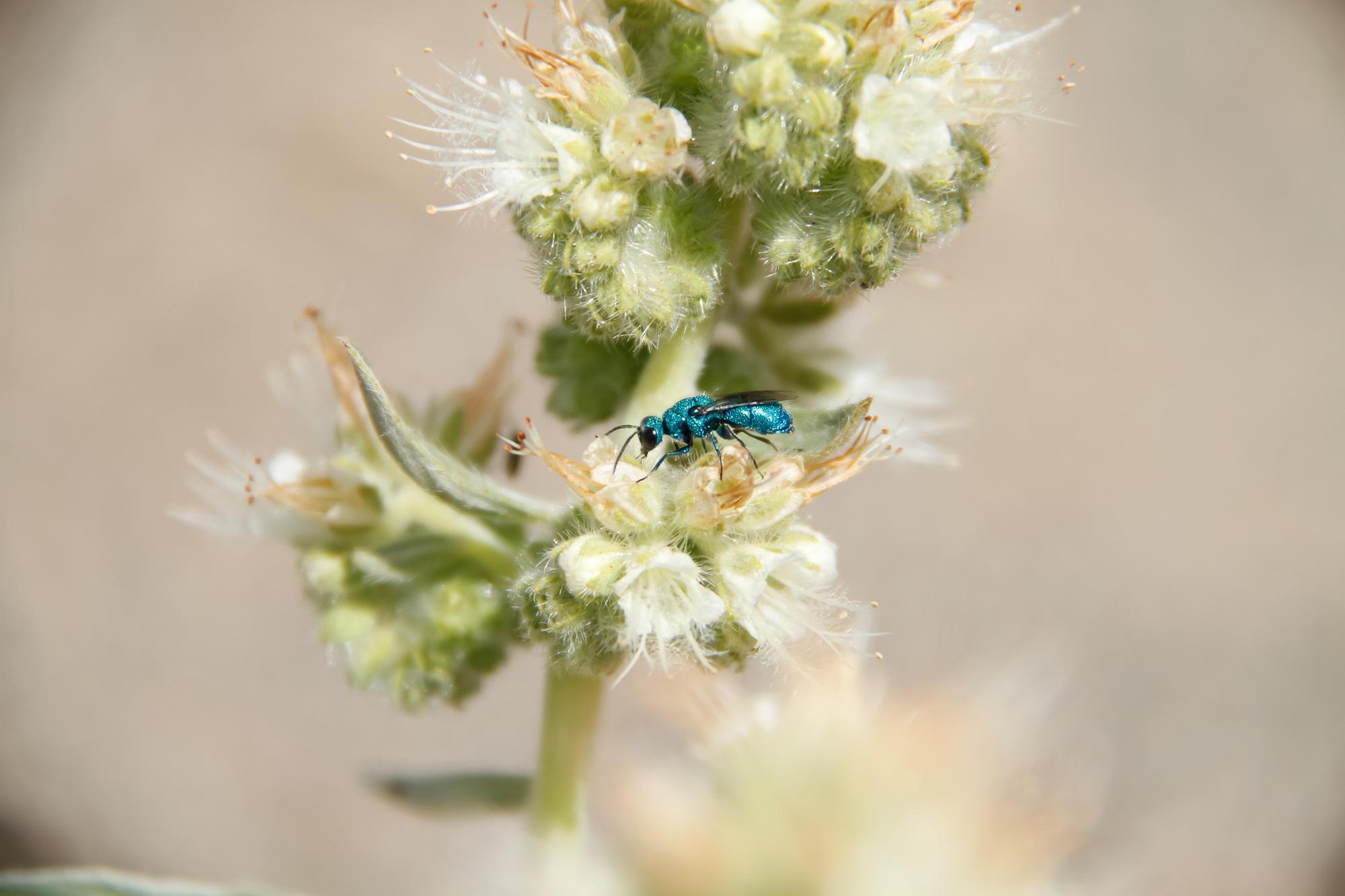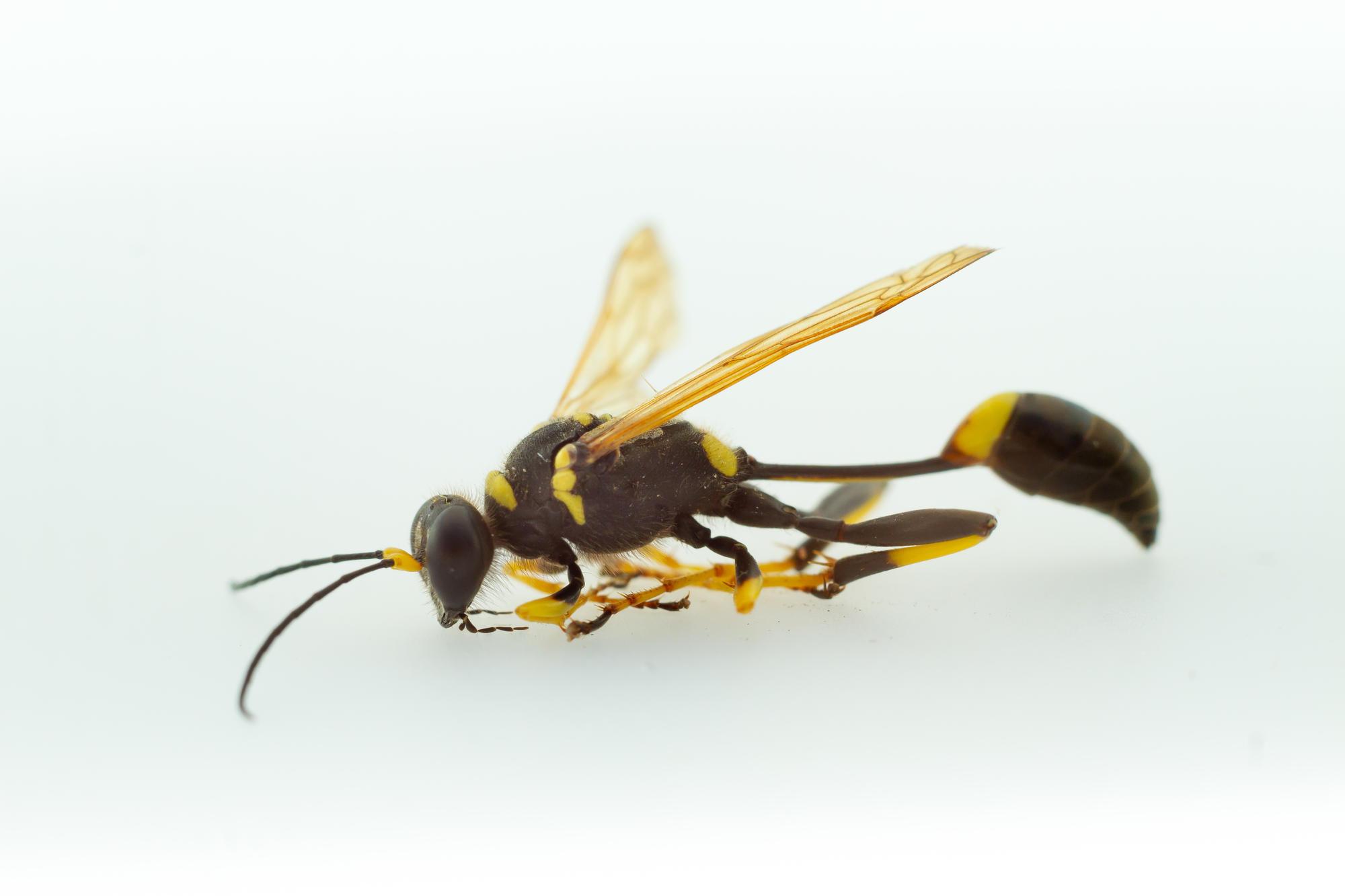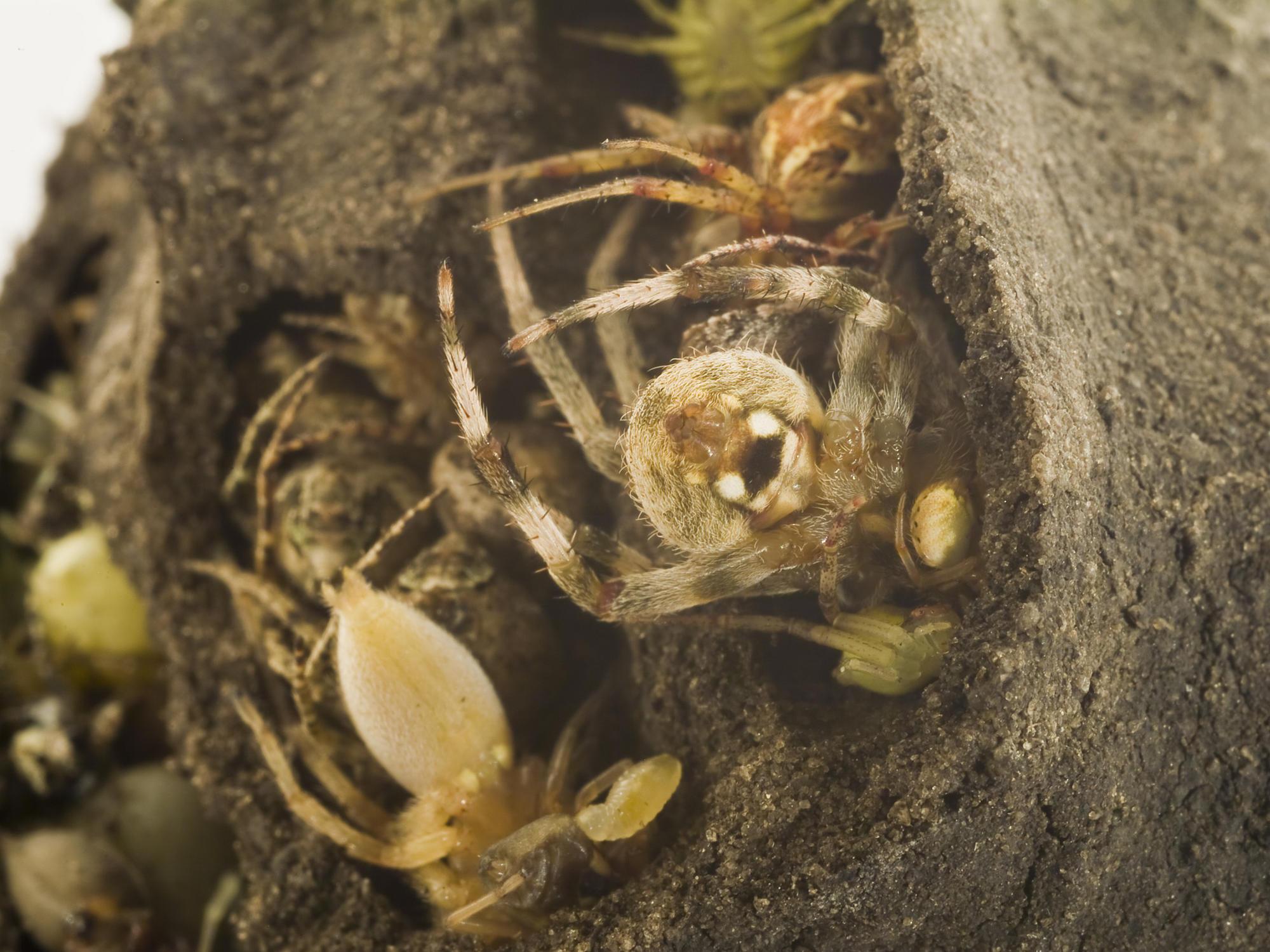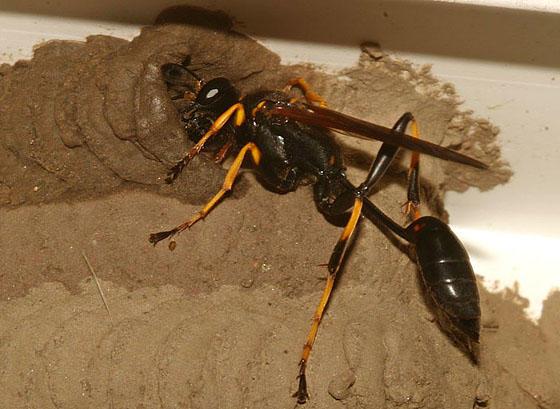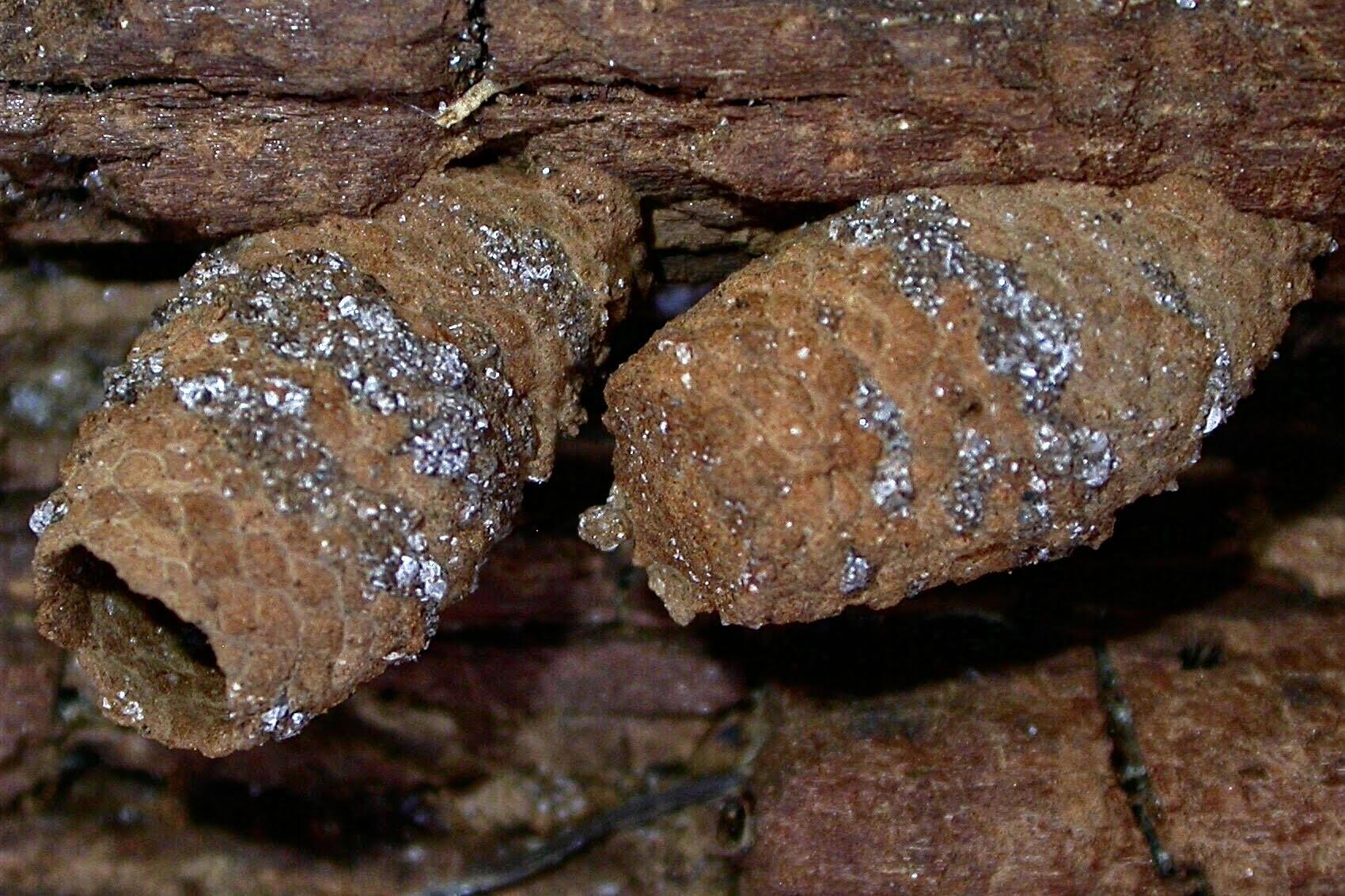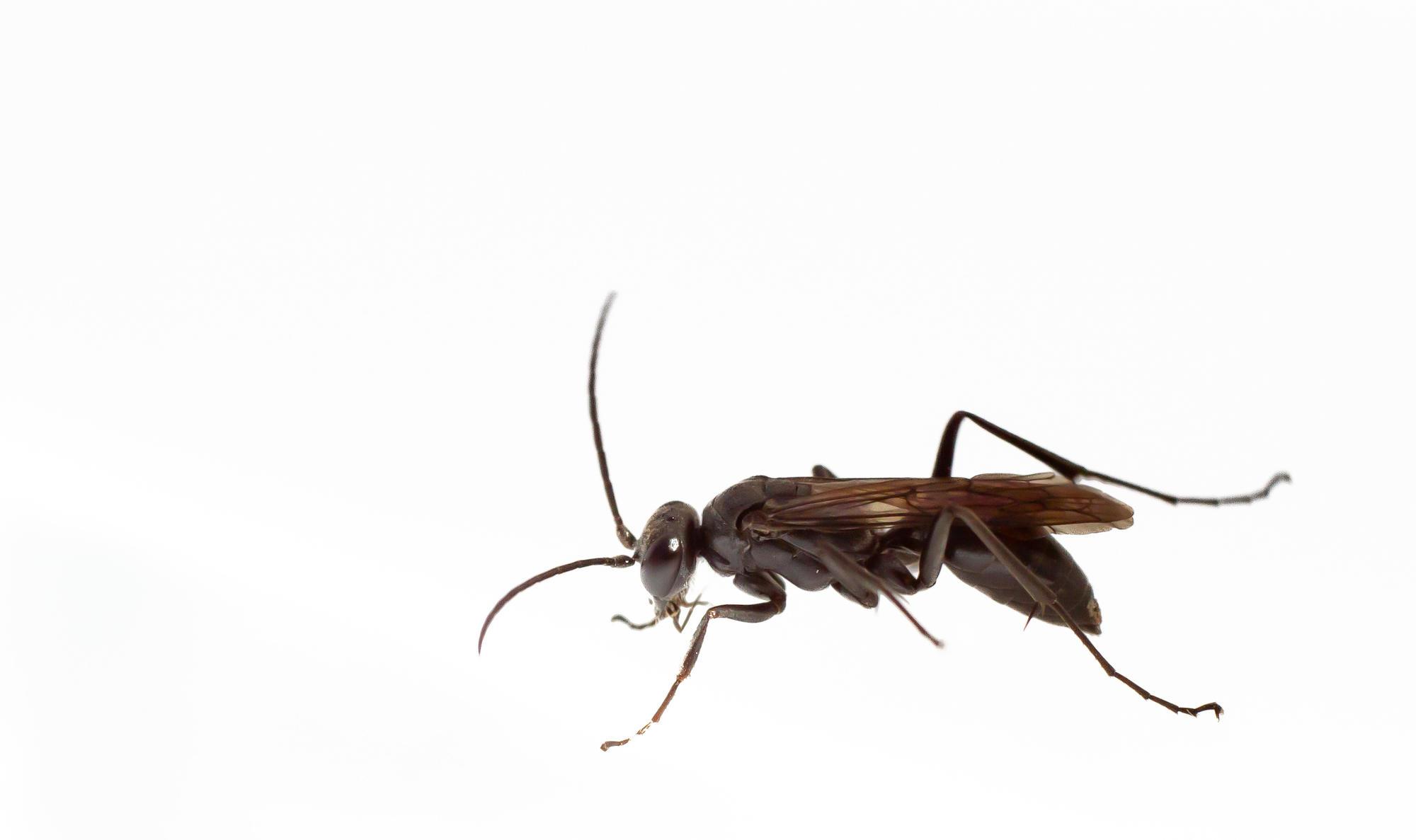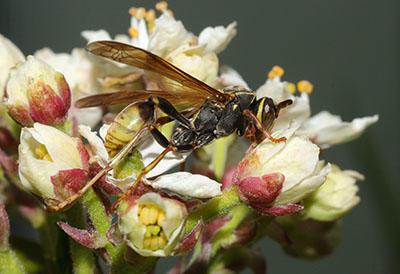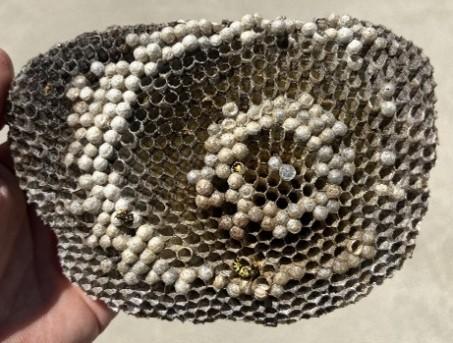How to use this publication
This publication is designed to increase awareness of the diversity of wasps in the Pacific Northwest, the complexity of their relationships and the benefits they provide to people. You’ll learn to understand and appreciate the insects you encounter on your property and surrounding natural areas.
In the following sections, we group wasps into three general feeding categories: vegetarians, parasitoids and predators. These categories do not represent the evolutionary relationships between groups of wasps, but they are useful for beginners aiming to learn more about wasp ecology and diversity. Keep in mind that these major groups are simply some of the most common of lesser-known wasps you may encounter. This is only a cursory overview — learn more in “Resources.”
What is a wasp?
You may believe you know what wasps are. But you are likely considering only a fraction of this diverse insect group. Wasps are members of the insect order Hymenoptera, which also includes bees, ants, sawflies and horntails.
The definition of “wasp” varies, even among scientists. For example, some scientists consider bees and ants to be highly specialized wasps. Other scientists make a distinction between the “wasp-waisted” Hymenoptera (a group called Apocrita) and those lacking a “wasp-waist” (a group called Symphyta).
Symphyta — sawflies and horntails — are the most primitive members of their order, and many scientists treat them as separate from wasps. We include them in this publication. Sawflies and horntails exemplify the impressive range of physical and behavioral adaptations achieved by this group. This publication does not discuss bees or ants because ample information is available on these familiar insects (see Extension pollinator resources).
Because this publication focuses on the diversity of lesser-known wasps, we discuss yellowjackets or hornets (Vespinae) only briefly because most people are already familiar with these common backyard visitors.
Regardless of the specific definition used, wasps:
- Have four wings (when wings are present).
- Use various social strategies (ranging from completely solitary to highly social).
- Undergo complete metamorphosis (from eggs to larvae, then pupae and finally adults).
Why care about wasps?
Thanks to painful encounters with a few wasp species, many people malign and misunderstand wasps. In reality, wasps are both highly beneficial and diverse. Negative experiences have overshadowed the multitude of ecosystem goods and services that wasps provide every day.
Wasps are beneficial because they regulate pests and are food for other wildlife.
Wasps also help decompose dead animals and cycle nutrients, like scavenging mammals and birds. Wasps also pollinate various plants. Some plants — including most figs and many orchids — are exclusively pollinated by specialized wasps.
Medical researchers study wasp venom for the treatment of such things as drug-resistant bacterial infections, including Staph, and various cancers. Recent research areas include investigating treatments for drug-resistant bacterial infections such as Staph and various cancers.
The more you learn about wasps, the more you will appreciate their diversity and life histories. You may even find ways to encourage them on your own property.
Biology
To talk about wasp biology, we must first acknowledge the overwhelming diversity in the ways that wasps survive, develop and reproduce (often referred to as life history strategies). Following are some broad generalizations about different aspects of wasp life history. (Bear in mind that the following “rules” have many exceptions.)
Development
All wasps undergo complete metamorphosis. Larvae (the fleshy grub or caterpillar-like first stage of development) emerge from eggs and feed until they spin cocoons and become pupae. The pupae quietly develop inside the cocoon until they chew through the cocoon and emerge as adults.
Adults ultimately mate, the female lays eggs and the cycle begins again. This developmental pattern is similar to those of moths, butterflies and beetles. The larvae of these insects do not at all resemble adults.
Other familiar insects like grasshoppers and true bugs undergo an incomplete metamorphosis, where newly hatched nymphs look like smaller versions of the adult insect. This is why you may notice “baby” praying mantids or crickets in the spring or early summer. The fact that wasps undergo complete metamorphosis is vital to understanding the many ways they impact ecosystems. Their larval feeding strategies dictate many of their life history traits.
Diet
Wasps do not feed in the egg and pupal stages, and short-lived adults feed almost exclusively on nectar. The larval stage is the key feeding stage. The larval diet makes wasps interesting and important to humans.
Some wasps eat living insects or other animal tissue, and some feed on plants. Others eat pollen or other food sources.
Sociality
Sociality is a highly varied aspect of wasp biology. Although there are always exceptions, most wasps are generally either solitary or social.
Wasps exhibiting the highest form of social behavior are known as “eusocial.” Eusocial wasps are likely the species that most readers will recognize. They tend to aggressively (and often painfully) defend their colonies. This is their duty — protecting and providing for the many eggs, larvae and pupae being raised inside their nests.
In these complex eusocial societies, labor is divided between social castes. Single queens produce all the eggs, and the queen’s workers feed larvae throughout their development (progressive provisioning). Honey bees behave in the same way.
Solitary wasps do not tend to work together, build large structures, aggressively defend finished nests or progressively provision their young. Though social species command more public recognition, solitary wasps comprise most wasp species on Earth (about 99% of the well over 100,000 described species). Consequently, solitary species have a wide range of life history strategies — making them both interesting and valuable.
Nests
Eusocial wasps build large, complex structures that house their colonies. Depending on the local climate, colonies may last years (though not in the cold, wet winters of the Pacific Northwest). Some of these structures are umbrella-shaped and have open bottoms with exposed brood cells (Figure 44).
Other colonies are more complex and contain multiple tiers of “umbrellas,” all fully encased in an envelope similar to papier-mâché. Wasps may build their nests in the branches of trees or bury them in soil. Nests in soil may have an incomplete envelope or no envelope at all. The observant hiker may notice traces of soil-dwelling yellowjacket nests left by a bear feasting on the fatty larvae and pupae it contained.
Though solitary wasps may not have the large and complex structures of the social species, they nest in creative ways and locations. Many dig out their own nest sites in the ground. Nests vary in complexity, ranging from one to several tunnels. The tunnels share an entrance and end in a brood cell where food is stored and an egg is laid.
Some species nest in preexisting cavities, burrow into stems or construct nests of mud, while others do not nest at all. After building and provisioning the nest, adult solitary wasps generally seal off and sometimes camouflage the entrance. Then they move on to make more elsewhere.
Reproduction
In eusocial wasp colonies, labor is divided between social castes. These are matriarchal societies, with a single queen producing the colony’s eggs. Social wasp queens maintain their dominant position by force, preventing the sexual development of the worker caste. Queens mate either at their emergence in spring, or during fall (in which case they wait to start a new colony until spring).
Sperm are stored in an organ called the spermatheca, and eggs are fertilized at will. Both social and solitary wasp females can determine the sex of their offspring. Fertilized eggs become female, and unfertilized eggs become male. This allows wasps to control the ratio of female workers and male reproductives.
In social species, the males are produced at the same time as the next batch of reproductive females (gynes) so that females may mate, disperse and begin new colonies.
Like the social wasps, female solitary wasps of species that overwinter may mate either before winter or after they emerge in spring. Males typically emerge before females, which enables them to be ready for emerging females if they have not already mated. Once female wasps have mated, they begin to locate appropriate food sources for their offspring. Since parental care tends to be limited in solitary wasp species, appropriate egg placement is critical. The hatching larvae must be able to access the food source with their limited mobility, though mobility varies greatly among different types of wasps. Since solitary wasp larvae do not benefit from progressive provisioning like their social counterparts, the mother wasp must ensure that enough food is provided up front to fuel development from newly hatched larvae to pupae. That’s why the size of the larder roughly corresponds to the size of the adult wasp.
Stingers
“Stingers” are highly adapted ovipositors (egg-laying organs) that some groups have evolved to deliver a painful venom. They use venom for defense and for hunting prey. Only female wasps can sting. Males lack this organ.
Many primitive groups — most species — of wasps use ovipositors only to deliver the egg into or onto the chosen hosts. “Stinging” species no longer use this organ for passing eggs. Wasps have developed a stunning array of ovipositor styles and ovipositing behaviors, depending on the specific host.
Major group accounts
Overview
In this publication, we group wasps based on three feeding strategies:
- Vegetarian (phytophagous) wasps consume plant tissue.
- Parasitoids consume a single living (sometimes paralyzed) prey item as part of development.
- Predators hunt numerous prey items, kill (or paralyze) them and feed them to their young.
While these categories do not characterize the evolutionary relationships between wasps, they do provide a useful lens through which to view the ecological services provided by wasps. Additionally, they highlight the phenomenon known as “convergent evolution.” In this system, unrelated organisms evolve similar traits in response to similar selection pressures.
These broad groupings are generalizations, and many wasp species exist in the “grey area” between them. There is also a substantial overlap between groups. Some wasps from plant-eating groups are parasitoids (many gall wasps), and some wasps from predatory groups have developed a plant-eating strategy (the pollen wasps). Let’s explore some of these interesting life histories.
The vegetarians
Most of the plant-feeding wasps belong to an unofficial group called Symphyta, which contains the sawflies and horntails. These are perhaps some of the least “wasp-looking” wasps. Other groups that contain plant feeders include the gall wasps (Cynipidae), fig wasps (Agaoninae) and pollen wasps (Masarinae).
The strategies that wasps have developed for accessing nutrition through plant tissues are highly varied and often specialized. Many plants benefit from these relationships by receiving pollination services. Others are neither harmed nor helped, as is the case with most plant galls.
Some vegetarian wasps do inflict harm to the host plant by feeding on the leaves or boring into stems or wood. These wasps are often considered pests because of the damage they inflict with their feeding strategies. Luckily, wasp parasitoids and predators are hard at work preying on these pests.
Gall wasps (Cynipidae)
Size: Small (1–8 mm)
Appearance: Various colors, often dark. Frequently appear to have a “humpback.” Their often colorful and oddly shaped galls are typically easier to find than the minute wasps themselves.
Hosts: Most commonly, oak (Quercus) and rose (Rosa) species. Galls may be on leaves, stems, buds, flowers, fruits or roots, depending on the species.
Behavior Gall wasps deposit eggs into rapidly developing plant tissue such as new leaves or buds, causing the plant to grow tissue (known as a gall) around the developing wasp. The gall provides both protection and food.
Habitat: Natural and landscaped settings with oak or rose species.
Other notes: Although cynipid wasps generally cause galls on oak and rose species, you may notice other types of galls on different plants. Fungi, bacteria and other insects including noncynipid wasps may also cause galls. This is an interesting area of exploration for the amateur naturalist. The next time that you notice an odd growth on a plant, try cutting it open. You may be surprised by what you find!
Purslane sawflies
(Schizocerella lineata and Schizocerella pilicornis)
Size: Small (4–6 mm)
Appearance: Purslane sawflies are typically black and yellow (sometimes orange). They lack a “wasp waist,” so there is no obvious separation between thorax and abdomen. Females have short and simple antennae. Males have forked antennae covered with short hairs, giving the appearance of four antennae.
Hosts: Purslane sawflies use various purslane species (Portulaca spp.) and sometimes miner’s lettuce (Claytonia perfoliata). Look for chewed leaf margins and “blisters” where the leaf mining sawflies have fed.
Behavior: Larvae feed on plant leaves as either external defoliators (S. lineata) or leaf-miners (S. pilicornis). After consuming enough leaf material to complete development, the larva drops to the soil, where it will burrow down (about 5 cm) and spin a cocoon in which to pupate.
Habitat: May be found wherever purslane species grow, including lawns and orchards, as well as more natural settings. As purslane is a widespread and common plant species, opportunities to observe purslane sawfly larvae are plentiful. The adults are a different story.
Other notes: These oldest and most primitive wasps are called sawflies due to their fly-like appearance (lack of “wasp waist”) and the serrated ovipositors which females use to cut into plant tissue before depositing eggs. Count yourself lucky to see a living adult purslane sawfly, as these wasps only live as adults for about 24 hours.
Pollen wasps (Masarinae)
Size: Medium to large (10–20 mm)
Appearance: These stout-bodied yellow and black wasps look like many familiar social predators (yellowjackets, hornets, paper wasps), but with distinctive clubbed antennae.
Host: These wasps may use many flowers, but they prefer various beardtongue (Penstemon) species. They will often rest in penstemon flowers overnight.
Behavior: Pollen wasps build their nests out of mud. Mated females gather pollen and nectar from flowers, store them in their crop for transport back to the nest, compose a “pollen loaf” by mixing these contents, lay a single egg on the loaf and close off the mud cell.
Habitat: Natural or landscaped environments containing appropriate floral and nesting resources. Nests may be built on rocks or twigs and are made of sand and mud.
Other notes: Physically, pollen wasps are similar to their closest relatives, the social predators (yellowjackets, hornets). Behaviorally, they are most like solitary bees, which gather pollen and nectar to create a “pollen loaf” that feeds a single larva. An important difference between pollen wasps and most bees, however, is how they transport these floral resources. Most bees have specialized pollen-carrying hairs called scopa, whereas pollen wasps store resources in an organ called a crop. They regurgitate the crop’s contents at the nest to form a pollen ball.
A plethora of parasitoids
Unlike vegetarian wasps, parasitoid larvae consume animal material from various sources. However, unlike predators, they only consume one host item during development. The host (the insect or spider in which the mother wasp lays an egg) is killed as the young wasp develops and feeds on its body. Parasitoids also differ from parasites (though the term sounds similar) because the host of a parasitoid always dies.
Parasitoid feeding strategies can be broadly divided into true parasitoids, stinging parasitoids and cleptoparasitoids. There are exceptions to these groups, but they encompass most parasitoid species.
True parasitoids
True parasitoids primarily attack insects and spiders at various stages of development. The female wasp will locate the host and lay one or many eggs either outside or inside the host. Eggs are commonly laid inside the host. This is a secure tactic for developing wasps, as they could be crushed if they were on the outside of a mobile host. When the wasp eggs hatch, the larvae feed on the host until they are ready to pupate. Pupation takes place within the host’s body. After pupation, the emerging adult wasp chews a hole in the exoskeleton of the host and emerges.
Cryptine wasps (Cryptinae)
Size: Often small to medium (5–10 mm). However, since this subfamily is composed of many species, sizes vary.
Appearance: With over 4,500 described species, the appearance of these wasps is highly variable. Many in the Pacific Northwest are red, sometimes with black or white markings. Wings may be smoky to black. Females have long ovipositors (Figure 13).
Host: Typically, the pupae of vegetarian insects including moths, butterflies and sawflies.
Behavior: Cryptine females will use their long ovipositor to “feel around” inside a cocoon and paralyze the pupa inside. They will then lay the egg on the outside of the pupa. Once hatched, the wasp larva will feed on the pupa and then use the same cocoon to pupate.
Habitat: While such a large group of wasps will have varied life histories and habitats, you may find many Pacific Northwest species on leaves as they search for prey cocoons or in flowers (Figure 8) as the adults forage for nectar.
Other notes: A moth, butterfly or sawfly cocoon will likely not show signs of being parasitized by the cryptine wasp. An interesting experiment for any budding young naturalist is to collect any cocoons that you can find and simply note what emerges. It might not be what you expected! Release any insect that does emerge, as they all play an important role in the ecosystem. Cryptine wasps help reduce the number of plant pests in your garden.
Caterpillar mummy wasps (Rogadinae)
Size: Small (1–8 mm)
Appearance: These small wasps may be brown to bright orange. (Nocturnal species tend to be more drab.) They typically have large, dark eyes. Their antennae are long and threadlike.
Host: These wasps often specialize on caterpillars and are important in controlling plant pests. This should make them welcome in your garden.
Behavior: Female wasps oviposit into caterpillars. The wasps hatch and consume the caterpillar, then essentially use its dried-out skin as a cocoon.
Habitat: These wasps are widespread and may be found anywhere they can find prey — that is, anywhere caterpillars are eating plants. If you see crispy-looking caterpillars on leaves or stems, there is a good chance that some sort of parasitoid wasp is inside (unless you spy an exit hole).
Other notes: Rogadine wasps begin consuming the host caterpillar as soon as they hatch. They start by “drinking” the hemolymph (bug blood), then they eat the fatty cells. At the end of the wasp’s development, it consumes the vital organs. This keeps the prey alive for as long as possible and keeps the larder from spoiling and killing the larva. Another uncanny aspect of rogadine behavior occurs at the end of their feeding window. Some of these wasps appear to cause their hosts to move to twigs and leaves before killing the host, which is thought to favor the parasitoid’s survival. Once situated, the wasp larva chews a hole in the caterpillar mummy, then pushes out any decaying remains or waste.
Stinging parasitoids
Stinging parasitoids also develop by feeding on living insects and spiders. The difference is that true parasitoids have an ovipositor, but stinging parasitoids have upgraded this organ to a “stinger.” This organ no longer passes eggs through. Instead, the female wasp uses it to temporarily paralyze the host while she lays an egg on the outside of its body. The host is generally able to continue normal activities until the parasitoid larva (feeding from outside in) has consumed enough vital organs to kill it. This highlights another difference between true parasitoids and stinging parasitoids — egg placement. Many (but not all) true parasitoids use their ovipositor to inject their egg inside the host. Stinging parasitoids do not. Instead, eggs emerge from near the base of the stinger. The host must be effectively paralyzed before the egg is laid on the outside of the host’s body, so the egg won’t be crushed by a mobile host.
Flat wasps (Bethylidae)
Size: Small (typically much less than 10 mm)
Appearance: As suggested by the common name “flat wasps,” bethylids appear rather flattened or compressed. They tend to be darker colors (black, brown or green) and often have a metallic sheen.
Host: Bethylids mostly parasitize beetle larvae, but some may also use various caterpillars.
Behavior: A female flat wasp will paralyze a host with multiple stings. She then lays several eggs on the outside of a single larval host. These hatch and begin feeding gregariously from the outside in. After consuming enough to fuel the rest of their development, the wasp larvae will pupate next to the spent carcass of their prey. In some species, the adult female wasp will care for the eggs and developing larvae by guarding both them and their food source.
Habitat: As with many wasps, the best place to find bethylids is where you find their hosts. Unlike previous examples, however, this may be in your living room or pantry. Since many of the beetles they parasitize feed on poorly stored pantry goods or dead insects left along uncleaned windowsills, there is a good chance of encountering these miniscule wasps at home.
Other notes: Although flat wasps are quite small, many pack an exquisitely painful sting. Some species are known to send people to the hospital with painful lesions.
Tiphiid wasps (Tiphiidae)
Size: Small to large (6–25 mm)
Appearance: Tiphiids are generally completely black, though some species are reddish. Most males are easily identified by an upcurved “hook” at the tip of the abdomen known as a pseudostinger. As the name implies, this is not a true stinger (male wasps never possess stingers). Instead, it is a modified final abdominal segment or modified genitalia, which may function to scare off predators.
Host: Tiphiids nearly exclusively attack soil-dwelling beetle larvae, usually scarab beetles (Scarabaeidae).
Behavior: Female tiphiids will dig into the soil in search of their hosts. Once a host is located, she will paralyze it with a sting before laying a single large egg on the outside of the incapacitated host. Upon hatching, the tiphiid larva will consume the host and pupate in the soil. Adults will emerge to begin the process again.
Habitat: Tiphiid adults may be easily recognized when they visit flowers for nectar. While it would be quite lucky to spot a female hunting, it is possible to see a tiphiid larva feeding on a beetle larva. If you find grubs while digging in your garden, check to see if they have any passengers.
Other notes: Some (though by no means all) of the soil-dwelling beetles that tiphiids hunt are serious pests. One such species is the Japanese beetle (Popillia japonica). The spring tiphia wasp (Tiphia vernalis) was intentionally released in the U.S. as a biological control for this beetle.
Velvet ants (Mutillidae)
Size: Small to large (6–20 mm)
Appearance: These wasps are sexually dimorphic (males and females look very different). The females completely lack wings and are relegated to running around on the ground searching for hosts. They are generally covered with dense hair of varying colors. The males are fully winged and have less hair than females. In some species, the males have pseudostingers, similar to tiphiid males.
Host: The predominant host taxa used by developing mutillid wasps are the larvae and pupae of bees or other wasps. Some other insect groups may be used as hosts, but to a much smaller degree. The host species are almost always soil or wood nesting, and the mutillid larva finishes development within the cell originally prepared for the host insect.
Behavior: Many mutillid species are nocturnal or active during twilight. You may see females searching for hosts, and males searching for females. This pattern is not uncommon in parasitoid wasps.
Habitat: Although these wasps are common in many habitat types, they are more noticeable and possibly more abundant in drier climates with more bare soil.
Other notes: In addition to the common name “velvet ants,” these wasps are also referred to as “cow killers” or “mule killers.” These nicknames originate from aspects of the female wasp’s biology. “Velvet ant” refers to the fact that the female is covered in dense hair and runs around erratically. “Cow killer” and “mule killer” originate from the painful sting of the female — “strong enough to kill a cow.” This is merely a saying, considering that mutillid wasps have some of the least toxic venoms of the order Hymenoptera. However, female mutillid wasps have some of the longest recorded stingers of any stinging wasp species (relative to body size). The highly painful, low-toxicity stings of these wasps help predators learn to avoid them.
Cleptoparasitoids
Cleptoparasitoids have adopted a unique strategy to avoid the hard and dangerous work of hunting and subduing hosts, while still enjoying the benefits of feeding their larvae animal protein. These clever wasps simply sneak into the nests of solitary predatory wasps and lay an egg on the paralyzed insect or spider. There are a few options for the cleptoparasitoid egg or larva at this point, but in the end the cleptoparasitoids will emerge from the nest and the solitary predator larva will die.
This is a similar strategy to the one employed by cuckoo birds (Cuculidae) or the brown-headed cow bird (Molothrus ater). It is no surprise that some of these wasps are referred to as cuckoo wasps. You can spend hours trying to understand the nuances of cleptoparasitoid behavior. However, these generalizations should provide a baseline from which to begin researching.
Cuckoo wasps (Chrysididae)
Size: Small to medium (3–12 mm)
Appearance: Cuckoo wasps (Figures 2, 16 and 34) are brilliantly colored — typically ruby, green, blue or some combination of these colors. They appear shiny and metallic due to the small divots that uniformly cover their bodies.
Host: Chrysidid wasp larvae almost exclusively use the eggs, larvae or pupae of other solitary hymenopteran species. In some cases, they feed on the host’s provisions (whether insect or pollen). In others, they directly feed on the insect.
Behavior: Cuckoo wasps sneak into the nests of other solitary wasps or bees while the host’s mother is still provisioning the nest. The female chrysidid lays her egg on or near the host’s provisions — usually a paralyzed insect or pollen loaf. If the female is found or disturbed, she can roll into a ball like a pill bug. This, along with their pitted exoskeleton, is an effective defense against their dangerous hosts.
Habitat: These wasps are widespread in most habitats, but you are most likely to see them flying and running hurriedly around the ground looking for nests to parasitize. Look for them around dead wood (such as barns, old logs and snags) where cavity-nesting wasps, which the cuckoos utilize, are frequently located.
Other notes: Unlike all closely related wasp species, cuckoo wasps are unable to sting. The ovipositor only serves to deposit the egg onto the host. If you can catch one of these wasps — no small feat considering their small size and quick, erratic flying — you can hold them without risking a painful sting.
The predators
Predators are probably the simplest group of wasps to understand, though that does not necessarily say much. Predators are generally either solitary or eusocial. The eusocial species are the most familiar wasps and include the yellowjackets and hornets (Vespinae), and paper wasps (Polistinae). The solitary species are similar to the stinging parasitoids. Often, a given taxonomic family will have some predatory and some stinging parasitoid species. The distinction is based on how many prey items are consumed and how much preparation is made (moving the prey or building a nest, for example). Predators hunt prey (often caterpillars, adult insects or spiders), kill (or paralyze) the prey by stinging, and provide the prey to their young. Thus, a predator provides numerous prey items compared to the one host used by the parasitoid, and the predator brings the prey items back to a burrow or nest they have built.
Solitary predators
Solitary predators are an interesting group of wasps to study. Observing them in the wild is highly entertaining. Among their ranks are spider-hunting wasps (Pompilidae and Sceliphrini), caterpillar hunters (Eumeninae and Ammophilinae), grasshopper and cricket hunters (many Crabronidae and Sphecidae) and many more! These wasps generally practice mass provisioning, where all prey items necessary for a larva to complete development are placed in a cell. After closing the cell off, the female wasp will do no more to care for her young. In rare cases, solitary predators may practice progressive provisioning, where young are continually fed prey items as they develop. While not as complex as those built by the eusocial species, these wasps often build simple structures that house their brood cells. These may be parallel mud cylinders (Sceliphrini), mud constructions inside old galls (Eumeninae), or simple suspended mud tubes (some Pompilidae). However, the majority seem to be ground-nesting species that dig burrows of varying complexity.
Mason and potter wasps (Eumeninae)
Size: Medium to large (10–20 mm)
Appearance: Eumenid wasps typically have alternating stripes of yellow and black, or white and black. They resemble the closely related vespid wasps (like yellowjackets and paper wasps). When at rest, they fold their wings in half and lay them back in a V-like pattern.
Host: These wasps mostly feed moth caterpillars to their young.
Behavior: Although eumenid wasps are closely related to the social vespids, they are solitary. These wasps hunt larval insects, which are paralyzed and placed into cells along with a single egg. Individual cells are separated by mud partitions. After the eggs hatch, the larvae will feed on the stored caterpillars and then pupate within these cells.
Habitat: These wasps may be found in most habitat types.
Other notes: Potter wasps and mason wasps look and behave similarly, with one major difference. Mason wasps typically use preexisting cavities to construct nests. This may include old nests from other solitary wasps or bees, or even old galls. Potter wasps also use mud to construct their nests. However, these wasps create their entire structure (often pot-shaped) instead of using preexisting cavities.
Mud daubers (Sceliphron and Chalybion spp.)
Size: Large (about 20–30 mm)
Appearance: Mud dauber wasps from the genus Sceliphron have varying levels of black and yellow coloring. In contrast, mud dauber wasps from the genus Chalybion are a dark metallic blue. Wasps from both genera belong to a larger group of wasps, known colloquially as thread-waisted wasps (Sphecidae). They have a thin “petiole” between their abdomen and thorax, a trait you can see from a distance.
Host: Mud daubers use paralyzed spiders to mass provision their larvae. The number of spiders within a cell depends on the size of the chosen prey (up to two dozen for very small spiders).
Behavior: Both groups of mud daubers construct nests composed of parallel cylindrical cells filled with paralyzed spiders. Before closing off each cell, an egg is laid on either the first or last spider. Finally, the cell is closed off with a mud plug. The following year, these young wasps will be fully developed and emerge to begin the process over again. Sceliphron mud daubers construct their own nests on the sides of various fixed structures, while Chalybion mud daubers typically use preexisting cavities (including old Sceliphron nests).
Habitat: These are widespread wasps often seen in homes and other buildings. They likely need a water source to build their mud nests.
Other notes: Mud daubers can look like paper wasps. They often build their small nests in similar locations (under the eaves, between large gaps in concrete walls, inside cinderblock holes). But their behavior differs. Homeowners have nothing to fear from these wasps, even when they build their nests close to doorways. Since mud daubers are solitary (unlike paper wasps), they do not guard their nests after construction and provisioning. They will not sting people walking by. If left alone, young mud daubers will emerge from the nest the following year to help keep the spider population in check.
Spider wasps (Pompilidae)
Size: Small to large (5–40 mm)
Appearance: Pompilid wasps (Figures 10, 40) are usually dark colors, though they sometimes have lighter colored markings, wings and hairs. Distinctive long antennae are frequently curled towards the ends. Long hind legs are armed with formidable spikes.
Host: Spider wasps, unsurprisingly, use only spiders to feed their larvae. Their feeding habits are differentiated from mud daubers in that only a single spider is provisioned per larva.
Behavior: Spider wasps paralyze a single spider on which they lay a single egg. The paralyzed spiders may be concealed in the spider’s own burrow, placed in nests dug out of the soil, or in constructed nests more like the mud daubers. You may see female spider wasps out hunting, moving quickly and erratically across bare ground. Between each lunging movement, they quickly flit their wings. Once you know what to look for, this movement pattern makes spider wasps easy to spot.
Habitat: Spider wasps occur in most habitat types, though they can be most readily observed moving across bare soil in search of prey.
Other notes: Spider wasps provide only a single spider for each egg. Smaller species use smaller spiders and larger species use larger spiders.. An extreme example of this occurs in tarantula hawks (Pepsis and Hemipepsis), where an entire paralyzed tarantula is provided. The battle between a large wasp and a tarantula is truly incredible. The wasp relies on its behavior (it can “scoot” on its back, underneath the spider, to deliver the sting) and its long, spiny legs and flexible body for success.
Eusocial predators
Eusocial predators are the most familiar wasps. This makes sense considering their large size, propensity to sting (painfully), complex societies and structures, and how well they have adapted to human presence. Regardless of their negative associations, these wasps contribute much to the healthy functioning of many landscapes and natural systems.
Adult social wasps spend their time locating food sources, killing invertebrate prey or scavenging protein sources such as dead animals or picnic provisions. They chew the food into a paste (stored in their crop) and return to the colony to feed it to the brood. This has a significant impact on the local insect community, as some social species like paper wasps (Polistinae) prefer to prey on caterpillars, which are often farm and garden pests. These wasps rival birds in the quantity of insect biomass they remove from the environment This is remarkable considering that the wasps only have the warm months to forage, whereas insectivorous birds feed yearlong in many cases. Besides hunting living prey, social predators also scavenge large quantities of dead flesh. Additionally, social predators attack both the flies and the fly larvae associated with carcasses.
Paper wasps (Polistinae)
Size: Small to large (about 8–38 mm)
Appearance: Paper wasps are generally stout-bodied and variously colored. The most encountered species, the introduced European paper wasp (Polistes dominula), is yellow and black. Many native species are red, brown or yellow. Like mason and potter wasps, paper wasps fold their wings in half and position them backwards when at rest.
Host: Paper wasps are generalist predators, though they prefer caterpillars. Some species exert considerable pressure on caterpillars of sphinx moths, or hornworms. Since hornworms are pests on many nightshades, gardeners and growers alike may want to rethink removing paper wasp nests.
Behavior: Paper wasps use chewed wood pulp to construct umbrella-shaped nests, composed of a single layer of hexagonal cells, which contain their developing young. The larvae are progressively provisioned with prechewed and regurgitated animal protein. While paper wasps are not highly aggressive, they will defend their nests if disturbed.
Habitat: Widespread in both natural and human-dominated systems. Nests are typically built in concealed locations, which increases the chance for conflict with humans when nests are constructed near doors or other high-traffic areas.
Other notes: Most people are familiar with the European paper wasp (Polistes dominula). However, this wasp has only been in North America since the late 1970s. The Pacific Northwest has two native species which are far less common, the golden paper wasp (Polistes aurifer) and the western paper wasp (Mischocyttarus flavitarsis). Gardeners and farmers may want to avoid unnecessary nest destruction. In some cases, growers have intentionally placed “nest sheds” in their fields to increase predator pressure on crop pests.
Getting involved
The best way to appreciate and understand wasps (besides by reading publications like this) is to simply observe them.
When you see a fly, bee or other “bug,” take a closer look to make sure it isn’t really a wasp. After all, wasps come in all shapes and sizes. When you are positive that you have spotted a wasp, look closer. Many flies, moths, beetles and other insects are adept mimics.
To encounter more wasps, watch where they spend their time. Check flowers for adults feeding on nectar or males waiting for females. White or yellow composite flowers like sunflowers or Gaillardia may be particularly attractive to wasps. Umbel-shaped flowers like yarrow or parsnip are also good places to look for wasps. Watch patches of bare ground for wasps digging burrows and stashing paralyzed prey. These same patches will also have cleptoparasitoids (species that steal provisions).
Clusters of aphids on plants may also be good places to look for wasps. Many adult wasps feed on sugary aphid waste products called honeydew, especially when nectar is scarce in early spring and late fall. Additionally, many parasitoid wasps use aphids as hosts.
Search your tomato plants for large caterpillars, as these are conspicuous targets for numerous wasps, from tiny parasitoids to large social vespids.
Although many species of wasps have become at home near human dwellings and landscapes, a great way to see and observe more wasps is to provide favorable habitat. Three important aspects of habitat include:
- A place to nest and appropriate nesting materials.
- Food for the adults, such as a diverse selection of flowers.
- And food for the young (highly variable, but generally a diverse selection of insects).
Because wasp nesting needs are quite diverse, provide areas of bare soil, piled stones and perhaps some wood or sticks left undisturbed.
Adult wasps generally feed on nectar. A good rule of thumb for wasp or bee habitat is to feature a diverse selection of blooms (size, color, shape) with blooms available for as long as possible during the growing season. Luckily, this also makes for an attractive landscape.
Larval food sources are probably the most varied aspect of wasp habitat. Provide diverse nesting sites and plenty of varied plants to increase the abundance and diversity of insects on your property. This will provide ample food for most types of wasp larvae. Choose native plants, since many insect species have specialized relationships with native plants.
That leads into a final important consideration for increasing wasp abundance and diversity on your property: Protect the health of wasps and their food sources through judicious use of pesticides. Improper pesticide use will negatively impact wasps and may contribute to increases in the pest populations that wasps typically help to control. When pesticides are necessary, work to reduce harmful effects on wasps and other invertebrates. See the Oregon Bee Project’s resources for pesticide applicators.
Another way to learn more about wasps is to get involved in community science initiatives. Community science lets amateur naturalists participate in research by collecting and uploading data (like photos with GPS and date stamps). Scientists then use this data in their work. Start with these web-based resources:
